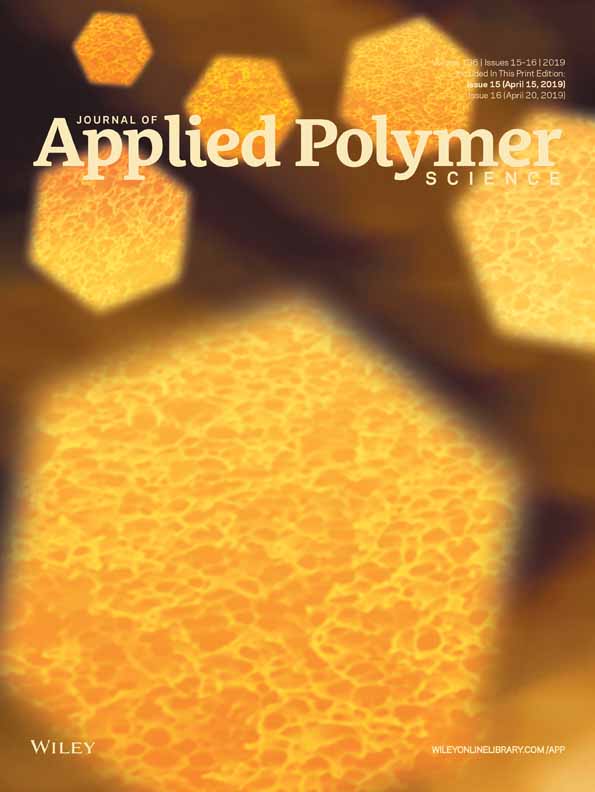Epoxy coating with self-healing capability based on a 2-mercaptobenzothiazole-loaded CeO2 nanocontainer
ABSTRACT
In this study, we demonstrated a facile approach for the synthesis of nanocontainers using the encapsulation of a 2-mercaptobenzothiazole (MBT) inhibitor; these nanocontainers were capable of responsively releasing a corrosion inhibitor and of self-healing performances. The anticorrosive performance of the CeO2 nanocontainers was investigated with electrochemical impedance spectroscopy (EIS) measurement in a saline electrolyte via the incorporation of different weight percentages (0.5, 1, and 2 wt %) of synthesized nanocontainer in epoxy (EP) resin. The EIS results show that the loading of 1 wt % CeO2 nanocontainer containing MBT inhibitor in the epoxy (EP) coating [EP/NC MBT–CeO2 (1%)] provided the highest Rcoat, the lowest constant phase element of coating, and the optimum release of MBT at different operating pHs. The highest coating resistance Rcoat values of this coating (7.81 × 107 Ω cm2) were about 12 and 8573 times greater than those considered for EP–CeO2 and EP coatings, respectively. Different releases of the MBT inhibitor were detected at various pHs. We found that the coating operating in acidic media exhibited a better self-healing performance. © 2018 Wiley Periodicals, Inc. J. Appl. Polym. Sci. 2019, 136, 47297.




